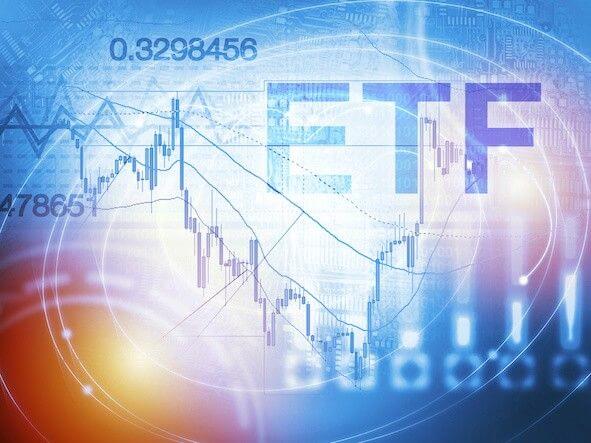What exactly is investment gold? Simply put, it is gold purchased for the purpose of making an investment.
This includes the purchase of collectible coins or the purchase and storage of bars and ingots, often with the intention of diversifying one’s investment portfolio and making a profit in the short, medium, or long term. Although physical gold does not directly pay dividends or interest, it is now seen as an investment product with specific advantages that is attracting a growing number of investors.
What is investment gold?
As soon as the first currencies appeared, physical gold quickly became the reference currency throughout the world. A monetary reign of several millennia that came to an end in 1971, with the end of the Bretton Woods Agreement and of the convertibility of the dollar into gold.
Gold then gradually moved away from its primary function as a currency, but the yellow metal was not quickly forgotten. With its prestigious status and flourishing industrial demand, gold continued playing a major role in global exchanges and gradually unveiled a new one as an investment product.
A brief history of investment gold
As we mentioned before, the 1970s were a pivotal moment in the history of gold. First, with the end of the Bretton Woods agreement in 1971, which ended gold’s run as a basis for most currencies. Then in 1975, with the abolition of the Gold Reserve Act of 1934, which prohibited the possession and trading of physical gold in the United States. With the end of the Gold Reserve Act, the purchase of gold by individuals became legal again in the United States, restoring gold’s pivotal role as an investment.
Despite the weight of the United States in the world economy, the history of gold is obviously not limited to the American continent, and other countries greatly contributed to the development of investment gold. The creation of the iconic South African coin, the Krugerrand, in 1967, for example, was a major turning point in the history of investment gold.

South Africa, then the world’s largest gold producer, was looking to capitalize on its natural wealth, and thought of the Krugerrand as the very first coin designed specifically for investment purposes. Many coins followed around the world, such as the Britannia in the United Kingdom in 1987, the American Eagle in the United States in 1986, and the Maple Leaf in Canada in 1979.
The World Gold Council, founded in 1987, has also helped change the way we view gold as a commodity and a form of investment. By helping to create a better understanding of the demand for gold around the world, they have fostered the creation of new tools to diversify gold investment opportunities, such as the creation of the very first ETF in 2004.
Many new rules and standards were then gradually put in place around the world. And the lifting of VAT on gold in many countries, as in Germany in 1993, led to a revival of private demand for physical gold investment. Many countries followed suit and liberalized their gold markets, such as India and Turkey in 1993, and Russia, which officially established its gold market in 1994.
Historically, as we have seen, investment gold was first considered a safe investment for states and individuals during periods of economic uncertainty and inflation. This is why it is commonly referred to as a safe haven, an asset used as a means of preserving one’s wealth against economic, social, or political downturns.
Our history is punctuated by fallen empires, coups d’états, hyperinflation, and national and international economic crises. During these more difficult periods, gold has often been used as a means to wait for better days. But changes in demand, the technological tools made available to investors, and the competitiveness of gold against other forms of investment have continued to drive investor interest in the metal.
Why invest in gold?
To fully understand the benefits of gold in an investment portfolio, one must first look at the factors that drive investor interest.
Demand for gold investments has increased by an average of 15% per year since 2001.
This can be attributed to several factors, among which:
- The various periods of economic growth and the ongoing crises.
- The arrival of new countries, and therefore fresh demand, on the open market.
- The wide availability of investment products such as ETFs, which has helped change the opinion of even the most skeptical investors about gold.
- Improved risk management for gold investors.
- Increased education of investors on the importance of better diversification of their investment portfolios.
With the latter being a key driver of demand for investment gold, the notion of portfolio diversification deserves some attention.
What is portfolio diversification?
For an investor, diversification is an investment strategy that consists in spreading his investments between several asset classes (stocks, gold, crypto-currencies, savings, etc.) whose prices are not or inversely correlated.
The goal here is to reduce the overall risk of the portfolio. By dividing his investment between these different products, the investor is generally limiting his overall risk which can sometimes lead to better returns on his investment.
Can gold diversify an investment portfolio?
As you can see, gold can become a particularly interesting asset when included in a diversified investment portfolio, because its price is not directly linked to other forms of investment or to market trends. In other words, its price tends to move differently than that of more traditional assets (savings, equities, etc.), giving it a potentially distinct advantage for investors seeking protection against market volatility.

Investors who want to offer more stability and security to their portfolio, thus often make the choice to add a sufficient share of gold to it, following the age-old advice: “don’t put all your eggs in one basket!”
And while gold is often seen as an effective way to protect an investment portfolio in times of economic hardship or market turmoil, its price, and therefore its value, has also tended to stay up or even rise when growth resumes and consumer spending increases.
Gold is used extensively in commerce and industry, including jewelry, manufacturing, electronics, and medicine. During periods of economic recovery or strong growth, this industrial demand can push up the price of gold and help make it a successful investment product.
Gold is a physical investment product
In addition to being an often-used asset for portfolio diversification, gold is also one of the few physical investment products. A quality that tends to protect it both from decisions made by governments, especially in times of crisis, as well as from the turmoil that the financial and banking systems may encounter.
Thus, unlike other forms of financial investment (shares, savings, life insurance etc.), properly stored physical gold does not have credit or default risk. In other words, if the actors serving as intermediaries (banks, financial companies, etc.) in your financial investment suddenly go out of business, as may be the case in times of financial crisis, the risk that they will refuse or even not be able to repay this investment is real. This is called default risk. Since gold is a physical investment and not a paper one, if it is stored outside the banking system, it is fully and physically owned by its owner and is thus protected from any default risk.
Another advantage of the physical nature of investment gold is that, unlike paper currencies, it cannot be printed at will. One characteristic that has allowed the yellow metal to retain its value over time. In times of sustained economic turmoil, it is this security that pushes investors and central banks to place part of their funds in gold.
Why are investors rethinking their portfolios?
Gold has long been seen as an essential but all too often forgotten component of any investment portfolio. Many investors seem to remember it only in times of inflation or high market volatility, when gold’s historical ability to protect the value of one’s capital comes into focus.
But a growing number of investors, certainly driven by the climate of recent years, are now opening their investment portfolios to gold. Supported by investment experts, new investment strategies seem to be emerging for the yellow metal. Already considered a strategic element in the long term for any investment portfolio, physical investment gold appears today as a relevant way to diversify a portfolio and possibly to improve one’s position in the current uncertain environment.
Gold now complements stocks and bonds to further balance investors’ portfolios. As a multi-faceted store of value and a safe haven, gold has historically outperformed many traditional asset classes and delivered a strong performance in both rising and falling markets. And this interest in investing in gold is reflected in the metal’s global demand, which has grown by an average of 14% per year since 2001, while the price of gold has increased nearly sixfold over the same period.
Here is what investors are often looking for when adding gold to their investment portfolio:
- Diversifying their portfolio to protect it in times of market stress.
- Improving the overall performance of their portfolio.
- Providing protection against inflation.
- Investing in a good long-term investment.
- Ensuring a reliable source of liquidity.
- Setting-up their savings in a physical asset.
What gold products to invest in?
Gold is probably the most accessible commodity for those looking to save, invest, or simply diversify their portfolios. Anyone can easily buy physical gold in the form of bars or coins. You just need to take the time to choose the product that will best suit your needs and budget.
Investment gold bars come in all sizes and fit all budgets. The smallest bars can weigh as little as 1 gram, while the largest can easily reach several tens or even hundreds of kilos. PAMP, one of the world’s largest gold refiners, has even launched the Multigramme, a series of detachable 1 gram Lady Fortuna bars, inspired by stamp plates.

This wide variety of gold bars allows all investors to find a product that fits their budget. Investing in bars is a common choice for those looking for the best value. This is because compared to gold coins, ingots will often have lower premiums and therefore a lower cost per ounce of gold. In other words, at the time of purchase, for the same budget, some gold bars can allow you to buy a larger quantity of gold than you maybe would with a coin.

But gold coins have other advantages and are often a preferred product for a first gold investment. This is particularly the case for investors looking for maximum liquidity, i.e. a product that is easy to resell. They often opt for the most widely distributed coins such as the South African Kruggerand, the British Britannia, or the American Eagle.
However, be careful not to confuse bullion coins with historic numismatic collector coins. Bullion coins are not old coins but recent coins whose price is set according to their gold content and then increased by a premium generally ranging from 1% to 5%.
Whatever your preference, coins or bullion bars, make sure you buy from a reputable dealer, either in person or over the internet. Your gold products should of course be kept in a vault and insured against theft and damage.
How much gold to buy?
This is the question that everyone asks when looking to invest in gold. How much gold should I add to my investment portfolio? While there is no easy answer, most investors seem to choose to invest between 5 and 15% of their total portfolio in precious metals. Of course, how much of your portfolio is allocated to gold depends on a number of factors: personal financial situation, investment strategy, risk appetite, etc.
But in order to have a clearer picture of how you can approach your gold investment, it is useful to understand whether you are interested in buying collectibles or investment gold, large or small quantities, etc. Indeed, the choice of your investment products and their quantity will first depend on your investment strategy.
- Do you want to buy gold for short-term gains or for long-term investment?
- Are you looking to protect your capital against market volatility or an economic crisis or do you want a physical investment product that offers liquidity and security, especially in the event of inflation?
The amount you need to buy will depend on your investment strategy, but also on the composition of your portfolio. Indeed, investment gold is often used to diversify one’s portfolio and you will have to decide how much you think you need to buy to offset possible losses elsewhere. Financial experts tend to say that investment gold can represent between 5% and sometimes up to 20% of a portfolio, depending on the degree of risk sought and the composition of that portfolio, but what exactly does that mean?
For example, if your portfolio already contains 80% of equities and you wish to invest in gold to protect your capital against a possible market downturn, these same experts believe that including 5% of gold in your portfolio might only offer you a small form of protection. In that sense, you could decide to aim for a larger share so that, if the stock market drops, the potential gains in the long term from your investment gold could offset some of the losses from your stocks and thus improve the overall balance to your investment portfolio.
In order to know how much to buy, you will first have to decide how much risk you are willing to take by keeping a poorly diversified portfolio. You can then imagine an investment in gold that could represent between 5% and 15% of your portfolio’s capital.
How much gold should you have in your portfolio? Here’s what some big-name investors think:
- “I say 20% to 30%” — Naguib Sawiris, an Egyptian billionaire to CNBC.
- “I think that 10% is the upper limit because I consider gold as an insurance policy” — Jim Cramer, host of Mad Money, one of America’s biggest finance and investment TV shows.
- “It’s a diversification asset […] and that’s the main reason to have gold in your portfolio, 5 to 10%” — Ray Dalio, founder of Bridgewater Associates, the world’s largest investment fund.
- “I recommend 10% as a minimum in portfolios” — Van Anantha-Nageswaran, analyst at Julius Baer, one of the largest private banking groups in Switzerland.
When is the best time to buy gold?
Knowing when to buy is one of the eternal questions for any investor. The simplest answer would be to say that you should buy when it makes sense in your investment strategy. In other words, if your strategy involves diversifying your portfolio to prevent risk, you should probably consider buying before the markets start getting too volatile. On the other hand, if you want to invest in gold as a store of value, then you’ll need to also look at the inflation curve to know when could be the best time to buy gold.

Where to buy and sell gold?
You have decided to start your gold savings or investment but you do not know where to buy physical gold? It is important that you understand the different actors and that you do your own research to avoid risks.
Before any purchase, you must make sure that you are buying from a reputable dealer. There are many frauds and scams waiting for gold buyers, it is therefore important to be careful when choosing who you buy from and only deal with a reseller with a strong reputation and links to the gold industry. Some investors are tempted to buy directly from individuals, but this is a risky game. How do you know if your gold is real or a fake? How can you be sure that the bar or coin has not been damaged? Buying gold from individuals, via Ebay or Amazon for example, is a risky practice and strongly discouraged unless you have a solid knowledge of the field.
This is why the vast majority of gold buyers choose to buy from a reputable dealer. If you do too, you must then choose between several options:
- buying gold from a bank.
- buying gold from a physical shop
- buying gold online, on a secure platform.
Each of these options has its advantages and disadvantages, which you need to understand to avoid surprises and hidden costs.
Then start by making a quick comparison between a few dealers of your choice: look at their general offer as well as their buying AND resale prices.
Once you have made your initial selection, here is a list of key points to consider when choosing your gold dealer:
- Is your dealer a reliable, transparent, and recognized player in the precious metals world?
- Are their prices fair and transparent, does your dealer clearly indicate the price per ounce for each product and the premium they charge?
- Do they offer a cost-effective storage solution or will you have to find one on your own?
- If your dealer offers storage, is it secure and out of the banking system?
- Is the cost of insurance against theft, loss, and damage included in their storage fee?
- Can you sell them back your gold or will you have to find a buyer on your own at the time of resale?
- If the dealer offers to buy back, do they charge a commission at the time of buyback?
Answering all these questions will help you choose the best option for your investment gold purchase.
Finding a reliable physical gold dealer can be time-consuming and complex, which is why more and more buyers are turning to online dealers backed by major players in the precious metals world. These online dealers offer the reliability and transparency of a large global group and the ease of purchase and resale of an online platform. Gold buyers will then have to make their choice based on their needs, what features they are looking for, and the level of risk they are willing to take.
Finally, as we have seen, knowing how you will resell your physical gold is also a key point to have in mind when buying. If you buy your gold in a physical shop, will you be able to resell it easily? How can you be sure of the reliability of your buyer? Will they take a commission on resale? Why is the purchase price different from the resale price? If you buy gold from your bank, can you sell it back to them instantly?
Answering these questions will also help you understand which dealer might fit your overall gold investments or savings plans.
How to store your gold?
Storage is actually a crucial, yet often forgotten, step in buying gold. It is not uncommon for the question to arise only when savers and investors have their physical gold in hands and it is already too late. However, choosing the appropriate storage solution is key for any investor who wants to reduce costs and ensure that his or her gold will be kept safely. Just as people think twice about keeping large amounts of cash in their homes, investors should consider the pros and cons of their storage choices before purchasing.
What are the risks of storing gold at home?
What is the cost of storing gold in a bank?
Are online storage offers reliable?
Indeed, physical gold storage offers can be divided into three categories:
- Home storage.
- Storage in a bank.
- Storage at a gold specialist.
Home storage.
While storing at home may seem like an obvious choice, it is in fact an often costly solution that can be dangerous if not properly managed. It is not only a matter of hiding your gold at home, you will also need to take out insurance to cover theft, damage or loss, as well as invest in a safe to protect your gold. Finally, you will also need to think about resale. Since home storage does not include resale, you will need to take the necessary steps to find a reliable buyer at the right price.
Bank storage.
When you store in a bank, your gold will be stored in a secure and insured vault. The bank will charge you storage fees as well as insurance fees which can vary greatly from bank to bank. Ask about the fees charged by your bank before making your choice. Some banks will not offer insurance for the products stored in their private safe deposit boxes, in which case you will need to take out separate insurance to cover the gold you store with them.
Finally, ask about the possibility of reselling directly to your bank. Very often, banks do not offer a gold buyback service, and you will have to find a reliable outside buyer on your own. Banks that will offer such service usually take a commission on the amount paid. If you choose to store your gold in a bank, you will also have to find out how much these commissions are.
Storage with a gold specialist.
Unless you already have a safe deposit box at home or an inexpensive and secure bank storage solution, choosing to store with a trusted actor in the gold industry is often the best option. You will then have to find the most transparent offer by finding out: what is the price of their storage? Is it secure? Is it insured? Is the insurance included in the storage price?
If your gold specialist offers resale, you must make sure of the terms and conditions of this offer. Indeed, many of them will promote attractive storage offers but charge commissions on resale. Other physical shops may ask for your gold to be recast to ensure its quality and purity if you are lacking the necessary documents for purity authentication. This can become a long and sometimes costly process which therefore takes away the liquidity of your gold.
In short, choosing the right storage solution is a key element of any physical gold purchase: it can save you significant costs in the long run and allow you to consider your investment with peace of mind.
Physical gold and other investment categories
If you are considering buying gold, you may already be familiar with other forms of traditional investments such as stocks, savings, or real estate. But there are other investments that you may not be familiar with: bitcoin, mining companies, gems, and for some, platinum, palladium, and even silver.
Should you invest in gold or stocks?
Let’s start by taking a look at the specifics of buying stocks on the stock market versus buying physical gold. Is it better to invest in the stock market or in gold? Is the gold market safer than the stock market? How to choose between buying gold and stocks?
An investor can consider earning money with his shares when the company in which he holds shares sees its profits increase. Part of these profits is then redistributed to the shareholders, this is called dividends.
However, only the largest shareholders can generally expect to receive substantial dividends. For most small shareholders, the dividends often correspond to sums sometimes lower than the share price itself. Most stock investors will therefore have to wait to sell their shares to hope to make a comfortable profit. This will be the case if the share price has risen between purchase and resale.
Investing in gold does not offer dividends. When you buy gold, you are buying a physical product that you own and whose price will rise or fall day by day. It is only at resale that an investor will be able to receive the benefits of their investment if the price has gone up over the course of his gold ownership.
Investing in stocks is often seen as riskier than gold, particularly on the long term. Gold’s reputation as a safe-haven investment is well established, and the precious metal historically tends to rise in value when stock markets and world economies are down.
Should you invest in gold or bitcoin?
While gold is a thousand-year-old currency, bitcoin is currently only a decade old. Both gold and bitcoin are scarce and liquid resources. While we know that only 21 million bitcoins will exist, it is not known when all the gold in the world will be mined from the earth, but we do know that its quantity is also limited.

Bitcoin, like gold, is difficult to corrupt, however, thanks to an encrypted and decentralized system and complex algorithms, but the infrastructure to ensure its security is not yet in place. It remains difficult to monitor Bitcoin effectively.
While gold has many historical applications (jewelry, electronics, medicine, industry, etc.) in addition to its use as an investment, bitcoin also has the potential to provide a valuable service: to enable the exchange of value across the world at virtually no cost and without intermediaries. But many experts see this potential as still in its infancy phase.
One of the main concerns for investors who view bitcoin as a safe haven is its volatility. In addition to general volatility, bitcoin seems to continue to be subject to the whims of the market and current events. Gold has historically experienced less volatility, which is why many investors see it as a safer asset by comparison.
In recent years, a number of cryptocurrencies have been launched, with some now rival bitcoin. Among them are “stablecoins”, which aim to offer more stability than traditional cryptocurrencies.
But in reality, whether it’s bitcoin, ethereum, or stablecoins, these cryptocurrencies are not competing with gold: they are often seen as an interesting addition for investors looking to diversify their portfolio.
Should you invest in gold or mining stocks?
Mining stocks can be interesting in that they sometimes benefit from leverage: when the price of gold rises, they tend to rise even more. In other words, mining stocks sometimes tend to outperform gold.

Indeed, mining stocks tend to be highly rewarded when all is well, and severely punished when things are bad. Thus, to understand the price of mining stocks and make a successful investment, it is necessary to have a good knowledge of some key areas: geopolitics, rules and regulations in producing countries, potential of mining sites, or the general quality in internal management and balance sheets of mining companies, etc.
With the complexity of the mining industry, many indicators can lead mining companies to sharp losses or bankruptcy, even when the price of gold is rising. Although a strong correlation between the price of gold and the price of mining shares is believed to exist, the reality is in fact much more complex.
Is cash a better asset than gold?
Cash is probably the asset we are most familiar with. It is both easy to store in a bank account or at home and is certainly the most liquid asset there is.

While it is difficult to do without some cash, it remains an investment asset with limited economic value. Stored in a checking account, cash not only earns no interest, but also devalues daily due to inflation. If a central bank decides to start printing money like most did during the COVID-19 crisis, or simply to devalue its currency to pay off its debts more easily, for example, the cash you keep might see its value go down.
Cash stored within the banking system is also subject to counterparty risks. Meaning that if your bank were to go into bankruptcy or if your government were to seize your bank or intervene on the financial system at large, you run the risk of not being able to access, or even lose, the money you have stored in the bank.
Keeping your cash in a savings account could seem a little more advantageous as they generally offer a percentage of annual interest. However, interest rates on savings account remain low, rarely exceeding a few percent, and have tended to decrease in recent years, often not even allowing savers to cover the loss in value caused by inflation.
Should you invest in another precious metal than gold?
The prices of gold and other precious metals tend to move in the same direction. This is not surprising, since they are part of the same investment category.
The main difference between an investment in gold and an investment in silver, platinum or palladium is the latter’s tendency to be somewhat more volatile and to move in line with industrial demand. Indeed, while we hear a lot about gold’s occasional short-term fluctuations, the metal has historically remained a relatively stable investment over the long term. For example, it has been only slightly more volatile than the S&P 500 over the past 30 years.

Silver, like platinum and palladium, tend to have much more volatile prices. While more than half of the demand for silver comes from its industrial use (electronics, automotive, solar panels, medicine, etc.) these metals are much more affected by downturns in industrial and commercial activity. Simply put: when economic activity increases, the price of these metals will tend to rise, but when the economy slows or stops, their price might decrease.
Finally, the small size of the silver, platinum, and palladium markets tends to make them susceptible to larger price swings. This is a feature often sought after by investors looking to speculate on short-term fluctuations.
What is paper gold?
In popular culture or in the media, the images we use to talk about gold usually is with a pile of bars, a collection of coins, or an open vault filled with ingots. But the reason we talk about physical gold is also to differentiate it from another type of investment that is associated with the yellow metal: paper gold.
The physical gold market is a very liquid market where goods are easily exchanged and investors can therefore acquire bars, ingots, or coins and thus diversify their portfolio. But physical gold, because of its stability, is an investment that is not conducive to the very short-term speculation that some investors sometimes seek. Therefore, some of them will turn to more commercial alternatives and this is where paper gold comes in.
But what exactly is paper gold?
Paper gold is actually a somewhat misleading name, as it is not actually gold. The term paper gold includes many financial instruments with sometimes obscure names: ETFs (Exchange Traded Funds), COMEX futures, gold swaps, leasing, unallocated gold, etc.

An ETF, which is the most widely known type of paper gold, is an asset created to reflect the real-time price of gold (also called the spot price) in the market. It is also what is called a “financial derivative”, i.e. a tool made to follow the evolution of a price (in this case, the price of gold), a bit like an index fund on the stock market.
Therefore an ETF is merely a paper instrument backed by physical gold. By investing in an ETF you do not actually own physical gold. The company issuing your ETF must in fact simply ensure that some portion of the ETFs they issue are actually backed by physical gold. For example, some reports estimate that there may be 200 times more paper gold in circulation than there is physical gold on earth. This is not a problem in itself, when the system works, but it can quickly become one if the companies issuing paper gold run into financial problems. If everybody decides to cash out at once, it’s possible that not everybody will be able to get their money back.
To sum up, paper gold is an asset that is mostly used for short-term speculations and returns, but which requires a good knowledge of the market and careful monitoring of the gold price. It is therefore often reserved for an informed public.
Digital gold: how does it work?
What exactly is digital gold? It is a kind of digital token based on a blockchain, in a similar sense than Bitcoin. It is therefore a form of cryptocurrency. But unlike Bitcoin, digital gold is based on a real physical product of equivalent quantity to its value. That is, if you buy a digital gold token you are assured that the same value of physical gold is then allocated to you in the dealer’s vaults. This is one of the key differences with ETFs which are not backed by their own value in gold but only by a portion of it, which can present a real risk when the time comes to recover your investment.
Digital gold therefore relies on the security and reliability of blockchain technology and the historical stability of physical gold over the long term.
Digital gold has grown significantly in recent years, especially among cryptocurrency investors looking to diversify their portfolios into precious metals. By digitizing gold ownership, digital gold allows them to simplify the purchase and resale of gold without ever directly having to store physical metal.
But can we then access the physical gold that digital gold is based on? While a stock of physical metal is always accessible upon delivery, digital gold, although based on physical metal, remains a purely digital product devoid of physical reality. Therefore, it is not possible to retrieve or have delivered the gold on which your digital gold tokens are based.
Gold Lesson 1: Introduction to Gold








